
Feb, 2017: Puerto Williams is the southernmost town in the world and is located on the northern coast of Isla Navarino—in the Chilean archipelago near the famous Patagonian land of Tierra del Fuego. The town’s one road extends across the northern edge of the island as it runs parallel along the coast with the Beagle Channel. The road simply ends at the home of a farmer who has the unwitting honor of being the last exit on the last road in the world. There is no need for the Chilean Government to build any further infrastructure because no one lives inland. Rafael Gonzalez, head guide for Lakutaia Fishing Lodge based on Isla Navarino, has a real fish sense and learned that trout live in the remote rivers in the interior of the island. However, getting to them posed a real problem. So he found an alternate means of transportation, a helicopter.
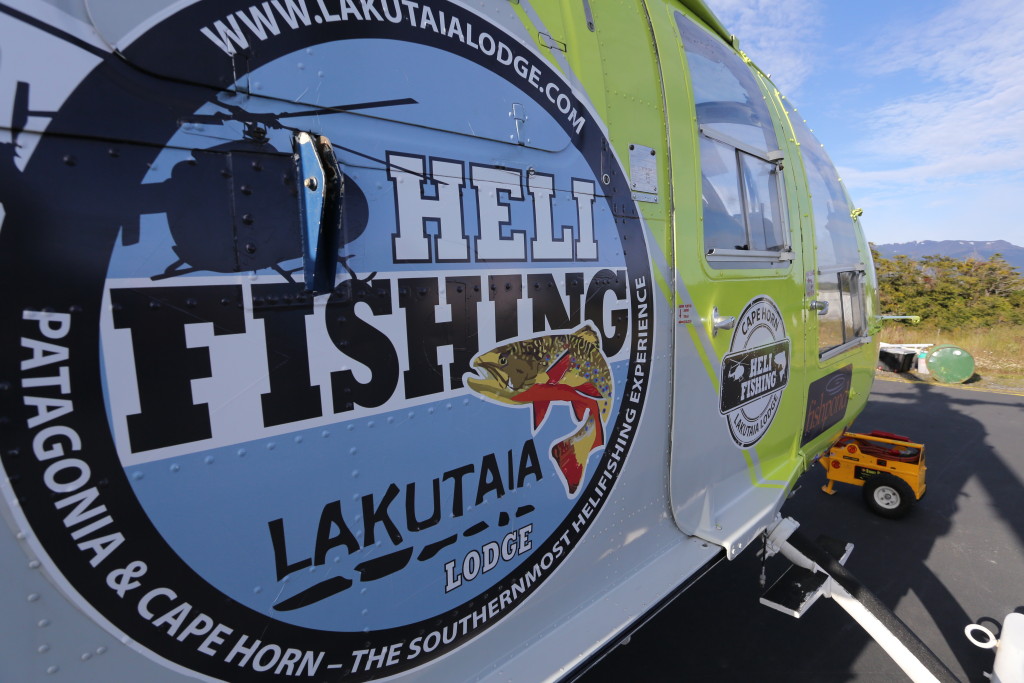
Rafael invited me to come see Lakutaia Lodge and experience the unique heli-fishing program that he had told me about the previous year when he came to visit me at the Frontiers office. I jumped at the chance and now found myself at the bottom of the world a mere hour by airplane from Antarctica.
My guide Felipe and my fishing companion Mauricio climbed into the helicopter at the small airport in Puerto Williams flush with excitement of being able to fly to rivers where few people on Earth have ever had the chance to fish. In mere moments we were lifted up into the blue sky.
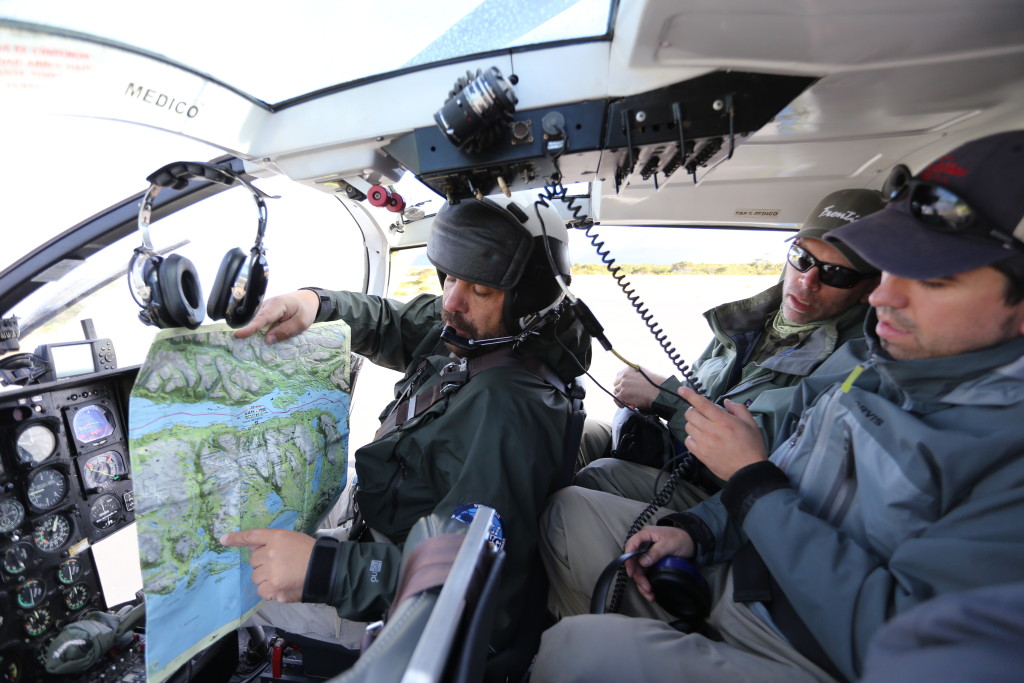
Miguel, the pilot, pointed and banked the helicopter slightly to show me the topography in the distance. “Dientes de Navarino,” he said through the headset intercom. My mind translated the Spanish that Miguel had just told me – “Teeth of Navarino.” The helicopter passed over the sharp peaks of granite that rose up from the Isla Navarino. The bare rock caught the morning light and glowed like a red carpet Hollywood smile as we continued on our way to fish the untouched waters of the island.

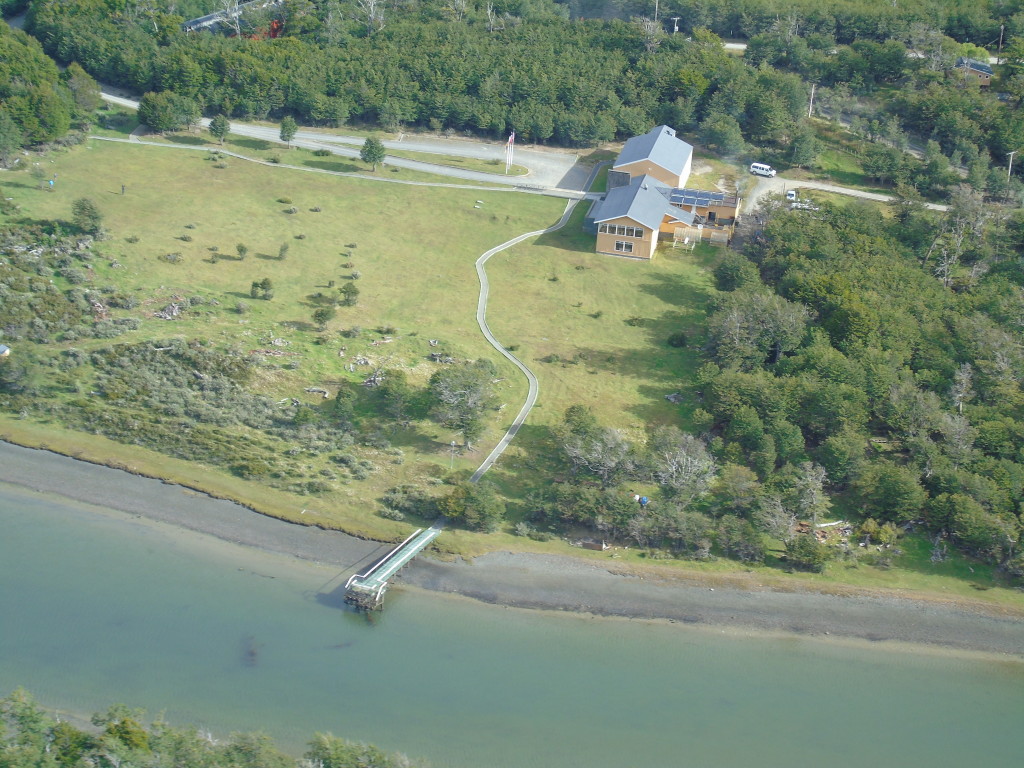
Below me a shotgun pattern of small ponds punctured the flat tundra while rivers coiled in tight s-curves between mountain ranges. I saw no evidence of a human foot print at all. All that was visible were untouched miles of patchwork red and green moss braced by stands of trees with their tops bent to nearly right angles from the harsh Patagonia wind.

We landed in an open field and ran clear of the helicopter blades. Very quickly our gear was offloaded by Felipe and in moments Miguel and the helicopter were gone into the horizon. Except for the wind blowing through the trees there was total silence.
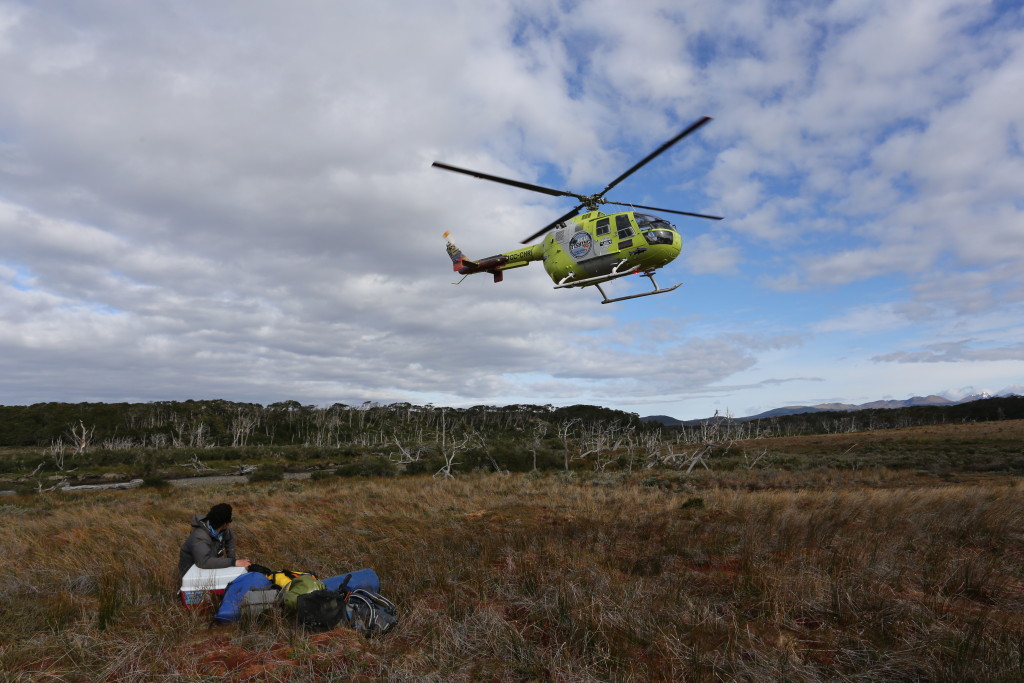
We rigged up our fly rods and began walking to the river. My feet sunk down in the pillow-like moss and sprung right back with each step. The river that beckoned was tannic colored and its first run looked like a perfect spot for a trout. As Felipe and I scanned the water a nose broke the glassy surface. And then another. In a straight line a row of trout were feeding on a small black fly that we spotted on top of the water. I tied on a #16 black gnat and cast to where I saw the first fish. Immediately my fly was sucked under the surface and a short time later I was holding a beautiful brook trout with some of the most brilliant colors that I have ever seen.

Mother Nature then flipped a switch. The weather darkened and the temperature dropped quickly. A light misty rain that had been falling now turned to sleet with flakes of snow punctuating this second day of February. But despite these conditions the fish in front of me still rose and I continued to catch them on my dry fly. Twenty minutes later, the sleet stopped and off in the distance the sky was clearing. The hatch abruptly stopped and Felipe, and Mauricio moved on down river after landing several nice trout. There was more river to fish and we were eager to explore.

Isla Navarino is affected by constantly changing weather patterns and it is not uncommon to have all four seasons occur in a day on the river. I was happy that I had packed fingerless wool gloves and my wool hat. But for the rest of the day I did not need them. The sun came out and warmed me and the river. Soon I had my wading jacket open, my gloves stowed in my pocket, and was thinking about reapplying my sunscreen. Everything was looking my way. I was throwing a weighted streamer on floating line and picking off trout in the root beer colored water. A rainbow and several nice browns came to the net after a spirited fight. Mauricio was also having success and we compared notes at lunch while resting on our red moss cushions.
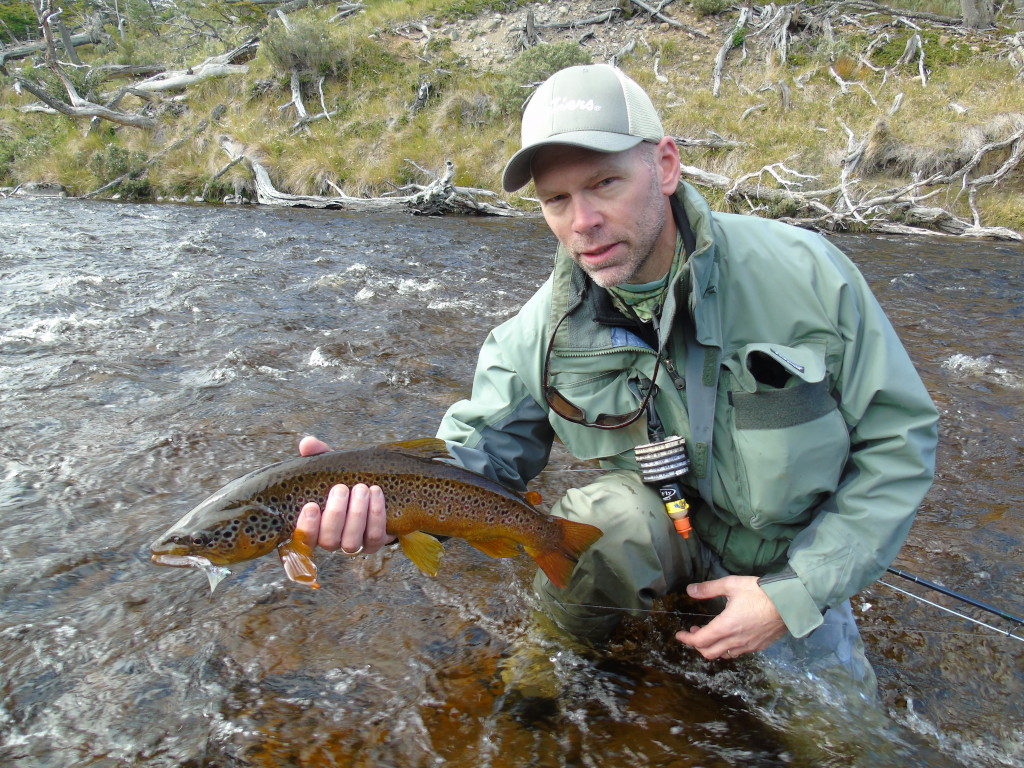
I found that the fishing is not terribly difficult unless you run into a stiff Patagonia wind but a 6-weight fly rod can help a lot with that. I learned that more often than not when I delivered the fly in the “fishy” spots the trout are eager to take all sorts of wet and dry offerings—including mouse patterns pulled across the tops of deep pools. Wading on the hard river bottoms was not very tricky which allowed my casts to be relatively short and I could cover the prime holding water easily. I liked that I did not have to bother with casting a full sinking line either. At most, a short 7-foot type 3 or 5 sinking tip was sufficient enough to get my fly into the deepest holes that I encountered. Otherwise, I was throwing dry flies on floating line.
I wondered what these trout were eating to sustain themselves in this remote ecosystem so close to Antarctica. I turned over some rocks in the river and saw mayfly and caddis fly nymphs as well as some small black snails. In the shallows, I saw small trout fry that would skitter out from under your feet for deeper water when disturbed.
The rivers that I fished on the island flow from Lago Windhond and Lago Navarino and wind their way along the tundra where they empty into Windhond Bay. With access to the ocean these rivers do allow for sea run brown – and brook trout – to enter the system. Although I did not catch any sea run fish. Rafael states that they are a bonus to the program and not the focus. I can only imagine what catching a sea run fish would be like on the 5-weight rod I was using to target brook trout!
Back in the comforts of the lodge, Rafael and I talked at length over a map of the island about the rivers that were known to hold trout and others which have yet to be explored. I salivated at the thought of being flown to one of those blue lines on the map where I could fish these untouched waters. I conjured up visions in my mind of the fish that I might find there. I told Rafael to save a couple of them for me as I will return again to fish this island.
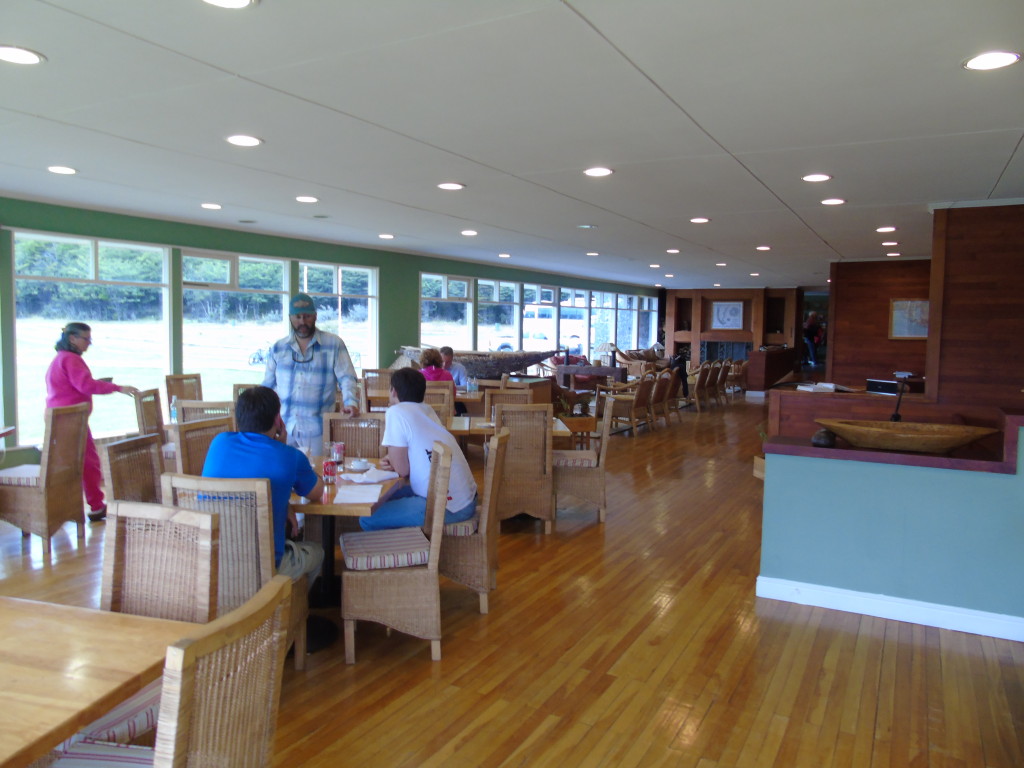
My visit came to an end and it was very apparent to me after talking with guests and guides alike that this fishing resource is very special. Rafael and Lakutaia Lodge know it and plan to keep it that way by limiting the number of rods and weeks that they operate each season. This exclusivity means that not every fisherman will get the chance to catch a trout in the southernmost rivers on Earth. I count myself as one of the lucky few to have been able to do it.
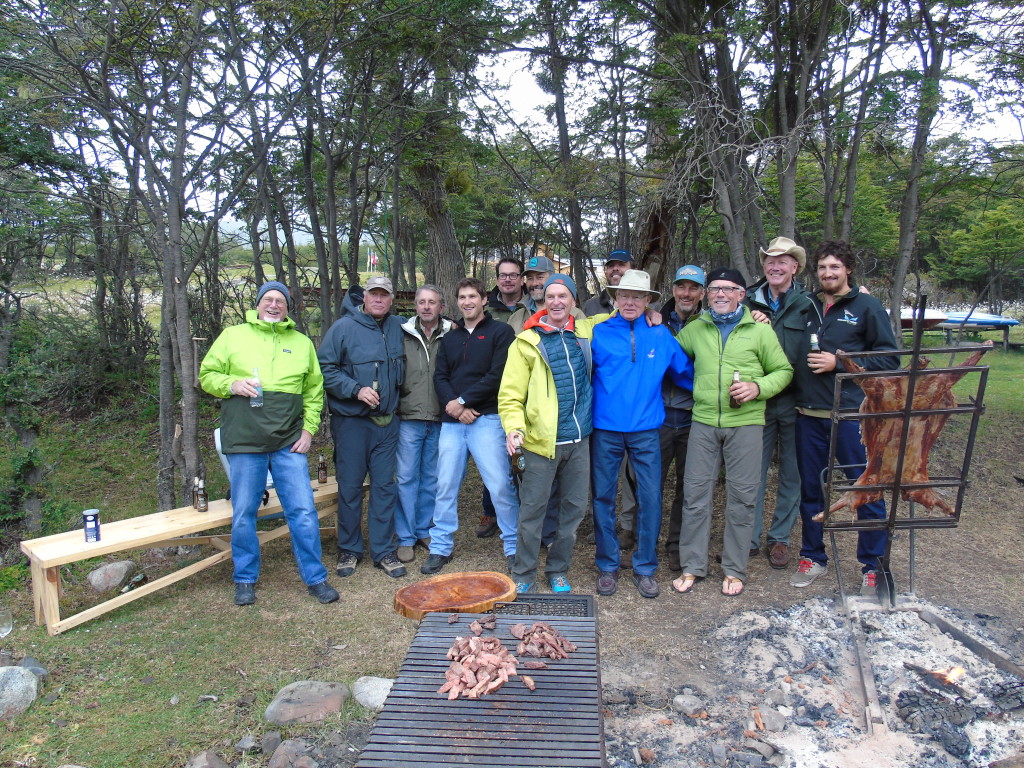
By: Ben Hoffman



